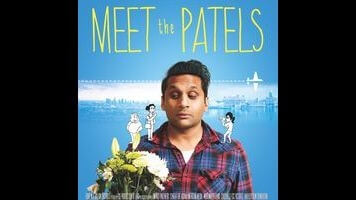
For Americans with no Indian background, the name “Patel” may not mean much, except as part of an Al Pacino rant in Glengarry Glen Ross, or the last name of the star of Slumdog Millionaire and Chappie. Apart from an occasional news story tracking the history of the Patel lineage and the prevalence of the surname—it’s often compared to “Smith” in terms of its ubiquity—it doesn’t come up much in day-to-day life. But for Meet The Patels co-director and subject Ravi Patel, a first-generation American actor who was 29 when he and his filmmaker sister Geeta first started shooting their home-movie-turned-comic-documentary, the name means a lot more. He calls it an all-access ticket to being treated as “unconditionally a part of the biggest family in the world.” As proof, he offers a funny, heart-warming story about how a road trip with his parents and sister became a lively inter-generational party when they happened to stop at a Tennessee motel run by other Patels. “It was almost as if we’d made the trip just to see them,” he says.
Like so many families, the extended Patel clan has its positives and negatives. For Ravi and Geeta, the advantages are support, love, a sense of inclusion, and instant bonding with strangers sharing their name. The main disadvantage seems to be that “When are you going to get married?” isn’t an intimate nuclear-family question, but a broad, insistent, culture-wide concern, an excuse for every Patel they meet to scold them for being single, then offer to set them up with instant spouses. Meet The Patels has a Morgan Spurlockian stunt-doc tone, as Ravi takes up the marriage challenge: Fresh off a breakup with a white girlfriend he never told his parents about over two years of dating, he gives into family pressure and throws himself into the marriage-setup game, letting dating sites, his parents’ marriage-broker arrangements, and the Patel network set him up with dozens of women in a theoretical search for a wife.
A few things prevent Meet The Patels from becoming a straight stunt-journalism quest like Super Size Me, or Bill Maher’s Religulous, or My Date With Drew, or Catfish. For one thing, Ravi’s search for love isn’t defined by a specific time period, or a specific goal. (Particularly the kind of insincere, blatantly artificial one that makes so many documentaries in this category feel disingenuous and smarmy.) He isn’t necessarily out to get married right away, and he isn’t willing to settle for an arranged wedding. The film is more about Ravi navigating an emotional crisis by broadening his horizons, examining the tension between his American heritage and his Indian roots around the question of how to find love and happiness, and accepting that maybe there’s some merit to longstanding traditions and his parents’ old-fashioned values. At the same time, he cocks an American kid’s dubious, amused eye at the world of all-Patel marriage conventions, or the family-network exchange of “biodatas,” a sort of romance resume that spousal prospects and their families can use to evaluate his job, horoscope, caste, skin tone (“wheatish”), and parents’ address.
Still, the film does have the bouncy, scattered comic feel of a Spurlock project. Ravi and Geeta use black-and-white animation to frame the story with cartoon versions of themselves and add in comic surrealism: At its broadest and silliest, the technique recalls some of the visual play in Marjane Satrapi’s Persepolis. The film jumps around in a hyperactive, easily distracted way from thought to thought, never entirely coming to grips with the central issue: Ravi broke up with his girlfriend because he couldn’t commit to her or face the stress of taking a white woman home to Mom and Dad, and he seems to be trying his family’s route to matrimony more to distract himself than to come to grips with his problems.
Autobiographical films often have a problem with shallowness: Meet The Patels is unquestionably navel-gazing, but the average navel is only so deep, and Ravi seems uncomfortable with his own. Given the chance to make Meet The Patels a fearless exploration of his hang-ups, he deflects with stand-up-style humor and distracting detail. Given the chance to move the focus off himself and look at broader cultural mores, he bunts, explaining the Patel family phenomenon largely via a brief, confusing speech from his father (with Ravi standing on-camera looking baffled, as an audience avatar), then returning to his latest tactic for meeting ladies. Geeta’s footage of the family isn’t always in focus (which Ravi acknowledges early on, teasing her about how often the film is badly framed or underlit), but the film often isn’t focused either. Viewers are likely to bring far more judgment and understanding to Ravi and his issues than the movie does.
But Meet The Patels does offer a light, hearty overview of a subculture and a family, with plenty of disarming humor. And it perfectly captures the paradoxes of family relationships—the way affection, respect, resentment, and exasperation can all blur into each other inside a close-knit family. The Patel subcastes, the Indian-American marriage network, and Ravi and Geeta’s family are all highly specific environments, and the film offers a peek inside for outsiders. But the film’s value may lie more in the entertaining ways it reveals how, regardless of all those specifics, some familiar emotions run through family connections in general.